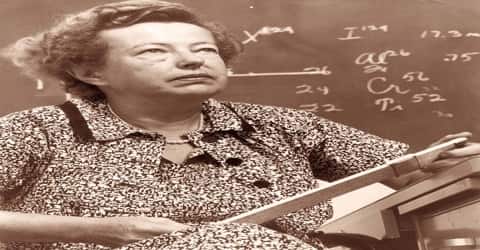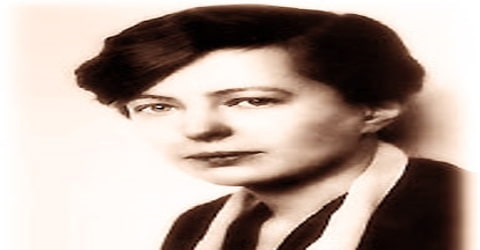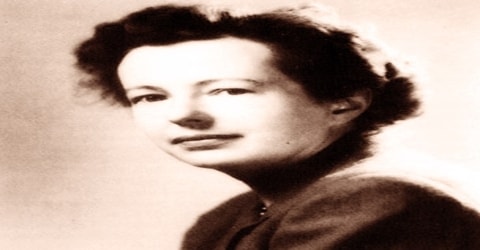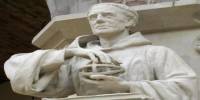Biography of Maria Goeppert Mayer
Maria Goeppert Mayer – German-born American theoretical physicist, and Nobel laureate.
Name: Maria Goeppert Mayer
Date of Birth: June 28, 1906
Place of Birth: Kattowitz, German Empire c(today Katowice, Poland)
Date of Death: February 20, 1972 (aged 65)
Place of Death: San Diego, California, United States
Occupation: Physicists
Father: Friedrich Goeppert
Mother: Maria Wolff Goeppert
Spouse/Ex: Joseph Edward Mayer (m. 1930-1972)
Children: Peter Conrad Mayer, Maria Mayer Wentzel
Early Life

A German-born American physicist who shared one-half of the 1963 Nobel Prize for Physics with J. Hans D. Jensen of West Germany for their proposal of the shell nuclear model, Maria Goeppert Mayer was born on June 28, 1906, in Kattowitz (now Katowice, Poland), a city in Prussia, the only child of Friedrich Göppert and his wife Maria née Wolff. She was the first woman to win the Nobel Prize for theoretical physics and the second woman in history to win a Nobel Prize the first being Marie Curie. She is most famous for proposing the nuclear shell model of the atomic nucleus.
A graduate of the University of Göttingen, Goeppert Mayer wrote her doctoral thesis on the theory of possible two-photon absorption by atoms. At the time, the chances of experimentally verifying her thesis seemed remote, but the development of the laser permitted this. Today, the unit for the two-photon absorption cross-section is named the Goeppert Mayer (GM) unit.
Mayer carried on her work during a time when women were not recognized by the academia and her work was largely accepted because of her husband, Dr. Joseph Edward Mayer. She is most well-known for her research in nuclear physics, but her vast body of work in the fields of atomic and chemical physics is equally significant. Much of her work provides the theoretical foundation for several scientific discoveries in laser physics, laser isotope separation, double-beta decay, and molecular orbital calculation. At the end of World War II she attended the U.S. atomic bomb project and during this time she began her research on how atomic nuclei are built, including the puzzling “magic numbers”. Even though she worked for the ‘Manhattan Project’, she was also active in the campaigns against military control of nuclear energy. Maria Goeppert Mayer was a member of the National Academy of Sciences and a corresponding member of the Akademie der Wissenschaften in Heidelberg. The American Physical Society created the Maria Goeppert Mayer Award to honor meritorious young female physicists.
Childhood, Family and Educational Life

Maria Goeppert Mayer, née Maria Goeppert, was born on June 28, 1906, in Kattowitz, a city in Prussia. She was the only child of Maria Wolff Goeppert and Friedrich Goeppert. Friedrich was a professor of paediatrics at Georgia Augusta University in Göttingen. Goeppert was closer to her father than her mother. “Well, my father was more interesting,” she later explained. “He was after all a scientist.”
Göppert was educated at the Höhere Technische in Göttingen, a school for middle-class girls who aspired to higher education. In 1921, she entered the Frauenstudium, a private high school run by suffragettes that aimed to prepare girls for university. She took the Abitur, the university entrance examination, at age 17, a year early, with three or four girls from her school and thirty boys. All the girls passed, but only one of the boys did.
In 1924 Göppert entered the University of Göttingen to study mathematics. Very soon, she became interested in physics and got enrolled in the Ph.D. program. In her 1930 doctoral thesis, she proposed the theory of two-photon absorption by atoms.
Personal Life
On January 19, 1930, Maria Goeppert married Joseph Edward Mayer, an American Rockefeller fellow who was one of James Franck’s assistants. The two had met when Mayer had boarded with the Goeppert family.
After marriage, the couple moved to Mayer’s home country, the United States, where Edward had been offered a position as associate professor of chemistry at Johns Hopkins University. They had two children, Maria Ann (who later married Donat Wentzel) and Peter Conrad.
Career and Works

In 1930 Maria Goeppert married the American chemical physicist Joseph E. Mayer, and a short time later she accompanied him to Johns Hopkins University in Baltimore, Maryland. Over the next nine years, she was associated with Johns Hopkins as a volunteer associate. During that time she collaborated with Karl Herzfeld and her husband in the study of organic molecules. She became a U.S. citizen in 1933.
From 1930 to 1939, Goeppert collaborated with her husband and the theoretical chemical physicist Karl F. Herzfeld in the fields of chemical physics and physical chemistry. Her most important research before 1949 was a paper she wrote with Alfred Lee Sklar, a student at the Catholic University of America on how chemical structure determines optical properties. Her work in the analysis of the spectra of complex systems based on the Hund-Mulliken approximation was elaborated in 1939 when Sklar collaborated with Hertha Sponer, Lothar Nordheim, and Edward Teller on a systematic analysis of the benzene spectrum.
In the following few years, Goeppert-Mayer worked at unofficial or volunteer positions, initially at the Johns Hopkins University in Baltimore, Maryland, from 1931-39, then Columbia University in 1940-46, and after that the University of Chicago. Later she also took different positions that came her way: a teaching position at the Sarah Lawrence College, a research position with Columbia University’s Substitute Alloy Materials Project and with the Opacity Project. She also spent some time at the Los Alamos Laboratory.
In 1940, Goeppert and her husband published a textbook ‘Statistical Mechanics’, on the quantum mechanical basis of statistical mechanics to chemists. In December 1941, Goeppert Mayer took up her first paid professional position, teaching science part-time at Sarah Lawrence College. After the outbreak of World War II, Mayer joined Harold Urey’s group, the Substitute Alloy Materials Laboratory (SAM) to solve the problem of isotope separation for the Manhattan Project. The objective of this project was to find a means of separating the fissile uranium-235 isotope in natural uranium; she researched the chemical and thermodynamic properties of uranium hexafluoride and investigated the possibility of separating isotopes by photochemical reactions. This method proved impractical at the time, but the development of lasers would later open the possibility of separation of isotopes by laser excitation.
In 1945, Maria Goeppert was offered the position of a voluntary associate professor at the University of Chicago. During her husband’s time at the University of Chicago, Goeppert-Mayer volunteered to become an Associate Professor of Physics at the school. Within a few months of her arrival, when the nearby Argonne National Laboratory was founded on July 1, 1946, Goeppert-Mayer was offered a part-time job there as a Senior Physicist in the Theoretical Physics Division. This was the first time in her career that she was working and paid at a level commensurate with her training and expertise. Two years later she made the breakthrough that earned her tremendous fame and respect in her field.
During her time at Chicago and Argonne in the late 1940s, Maria Goeppert Mayer developed a mathematical model for the structure of nuclear shells, which she published in 1950. Her model explained why certain numbers of nucleons in an atomic nucleus result in particularly stable configurations. These numbers are what Eugene Wigner called magic numbers: 2, 8, 20, 28, 50, 82, and 126. Enrico Fermi provided a critical insight by asking her: “Is there any indication of spin-orbit coupling?” She realized that this was indeed the case, and postulated that the nucleus is a series of closed shells and pairs of neutrons and protons tend to couple together. On the basis of this, she proposed in that inside the nucleus, protons, and neutrons are arranged in a series of nucleon layers, like the layers of an onion, with neutrons and protons rotating around each other at each level. During the same time but working independently, German physicist J. Hans D. Jensen reached the same conclusion.
Early in 1947, Goeppert began research on the isotopic abundances and published her results in 1948, in a paper entitled ‘On Closed Shells in Nuclei’ in which she concluded that nucleons occupy separate energy levels in the nucleus. In the mid-1950s, she and her husband extensively traveled abroad, giving lectures and attending conferences.

From 1948 to 1949 Maria Goeppert Mayer published several papers concerning the stability and configuration of protons and neutrons that constitute the atomic nucleus. She developed a theory that the nucleus consists of several shells or orbital levels, and that the distribution of protons and neutrons among these shells produces the characteristic degree of stability of each species of the nucleus. A similar theory was developed at the same time in Germany by J. Hans D. Jensen, with whom she subsequently collaborated on ‘Elementary Theory of Nuclear Shell Structure’ (1955). The work established her as a leading authority in the field.
In 1963, Goeppert Mayer, Jensen, and Wigner shared the Nobel Prize for Physics “for their discoveries concerning nuclear shell structure.” In 1965, she was guest of honor at Women’s Week in Japan, and in 1966 and 1967, she was a guest lecturer in India. Goeppert was the second female Nobel laureate in physics, after Marie Curie, and would be the last for over half a century, until Donna Strickland was awarded the prize in 2018.
Awards and Honor
In 1961, it was possible to experimentally verify Maria Goeppert’s doctoral thesis because of the development of the laser. To honor her original contribution to this area, the unit for the two-photon absorption cross-section is named the Goeppert-Mayer (GM) unit.
Maria Goeppert-Mayer was awarded the Nobel Prize in Physics in 1963, shared with J. Hans D. Jensen and Eugene Paul Wigner for their discoveries “concerning nuclear shell structure”.
Goeppert received honorary degrees of Doctor of Science from Russel Sage College, Mount Holyoke College, and Smith College.
Death and Legacy
Maria Goeppert Mayer died in San Diego, California, on February 20, 1972, after a heart attack that had struck her the previous year left her comatose. She was buried at El Camino Memorial Park in San Diego.
Her most famous work is her theory that the nucleus consists of several shells or orbital levels, and that the degree of stability of each kind of nucleus depends on the distribution of protons and neutrons among these shells. In June 1949, she announced the results of her research. Three German scientists, Otto Haxel, J. Hans D. Jensen, and Hans Suess, also arrived at the same conclusion at the same time.
After her death, the Maria Goeppert Mayer Award was created by the American Physical Society (APS) to honor young female physicists at the beginning of their careers. Open to all female physicists who hold Ph.D.s, the winner receives money and the opportunity to give guest lectures about her research at four major institutions. In December 2018, the APS named Argonne National Laboratory an APS Historic Site in recognition of her work. The University of California at San Diego organizes an annual Maria Goeppert Mayer symposium that brings together female researchers to talk about current science.
Maria Goeppert’s idea to compare the atomic nuclei with an onion, made Wolfgang Pauli, a noted physicist, give her the nickname “The Onion Madonna”. She had a great interest in Native American pottery and archaeology.
In 2011, Maria Goeppert’s name was included in the third issue of the ‘American Scientists’ compilation of US postage stamps. Her papers are in the Geisel Library at the University of California, San Diego, and the university’s physics department is housed in Mayer Hall, which is named after her and her husband.
Information Source:
















